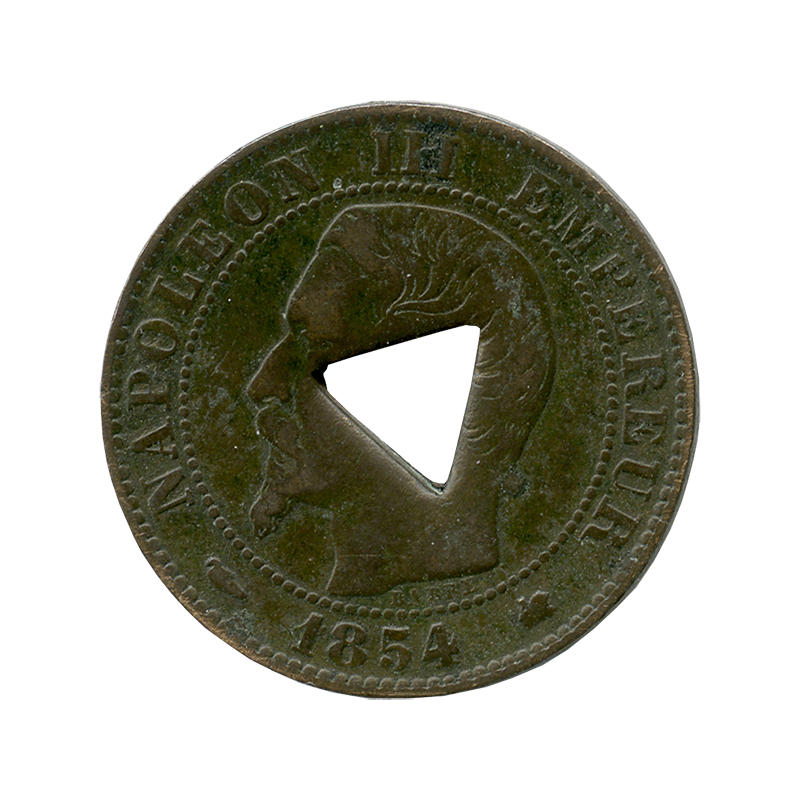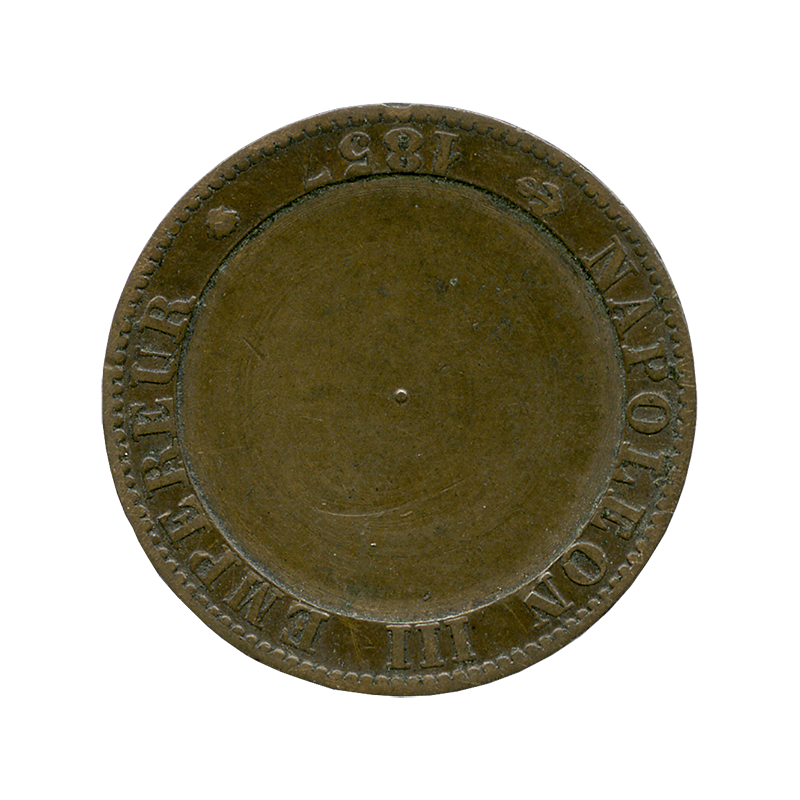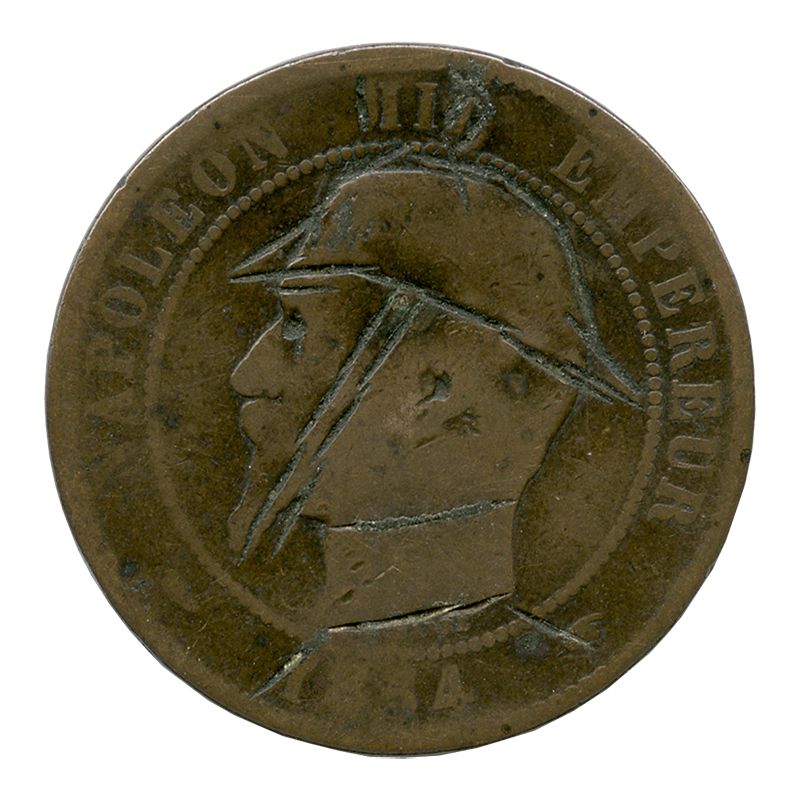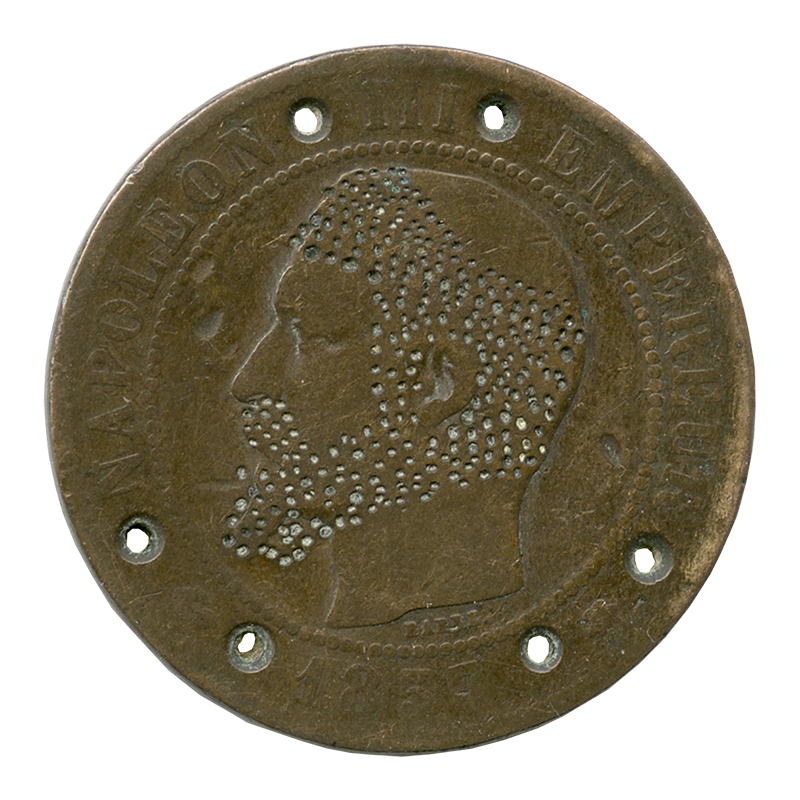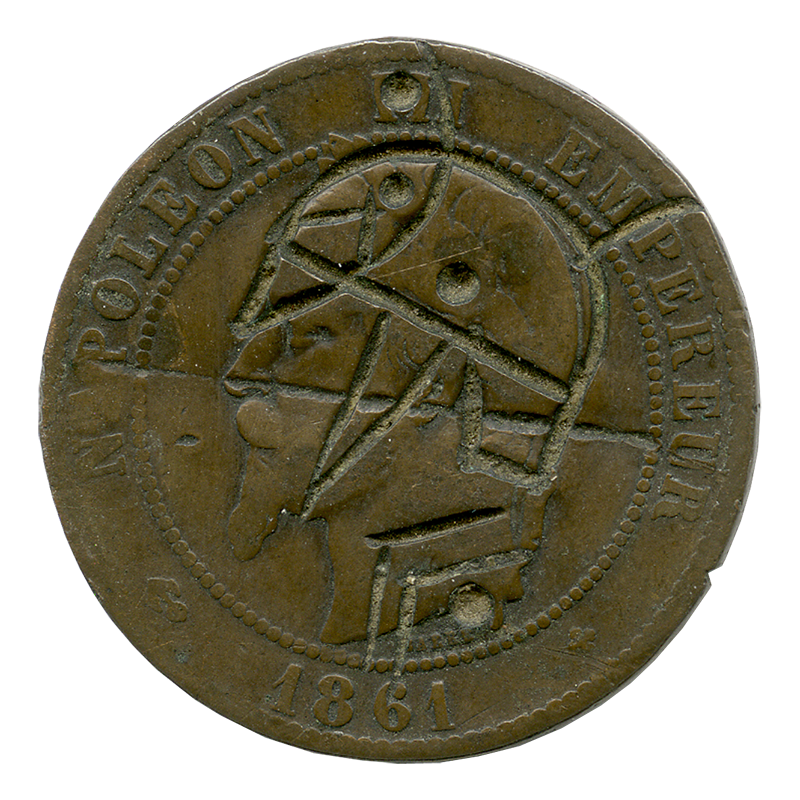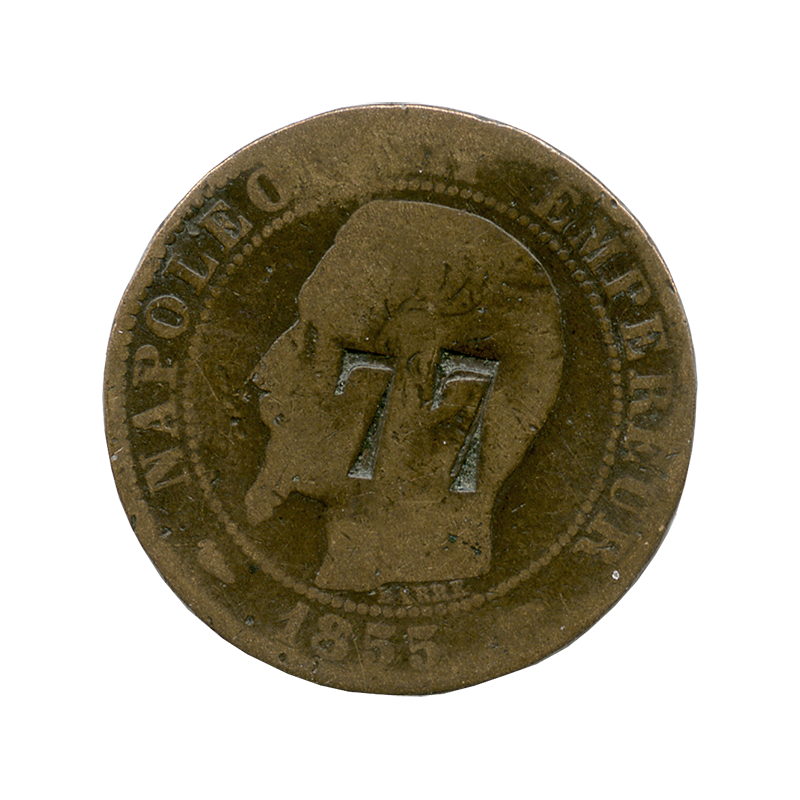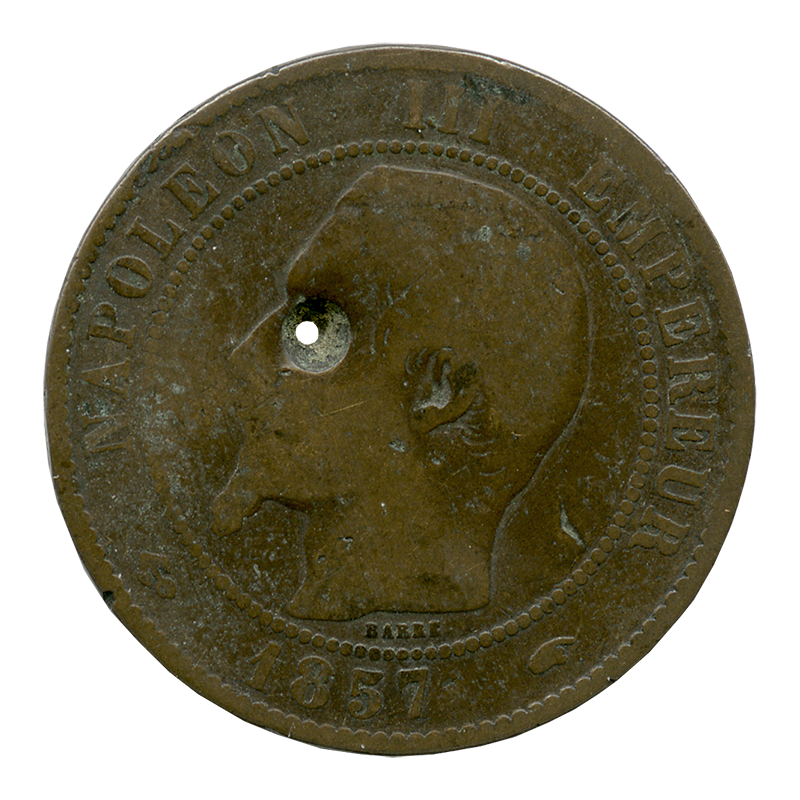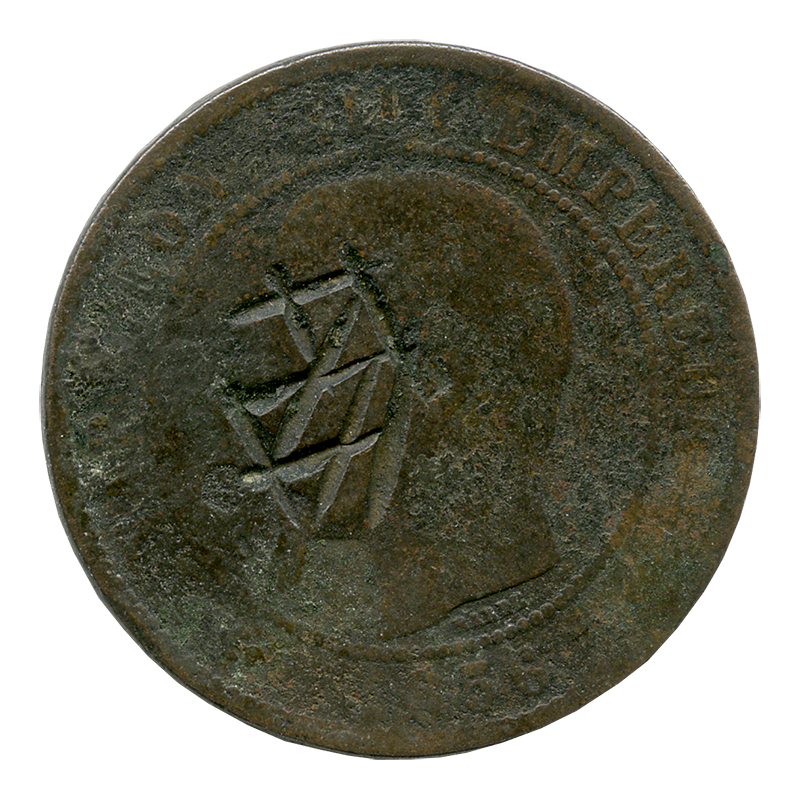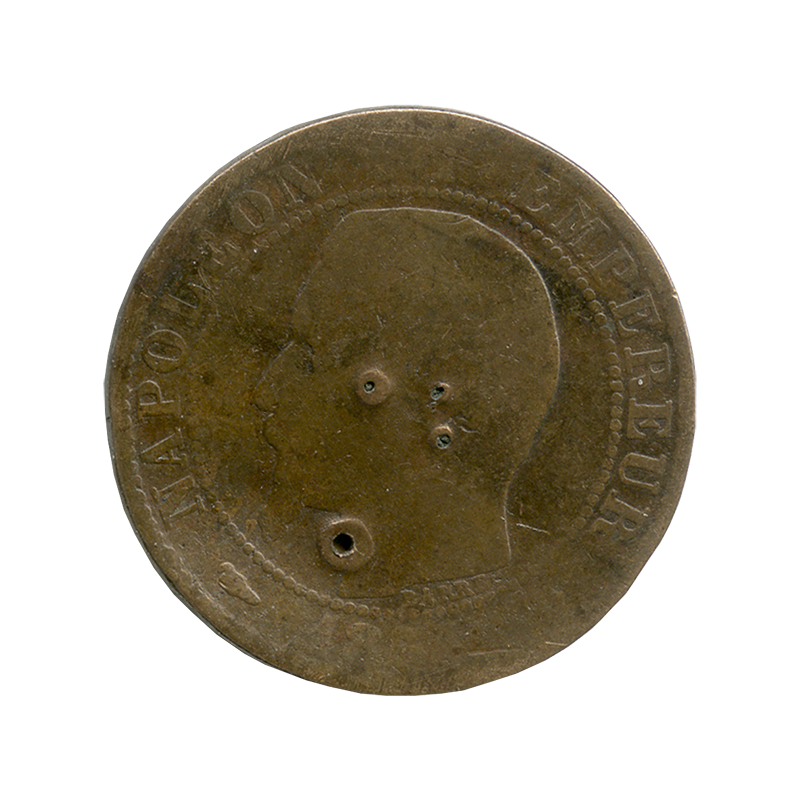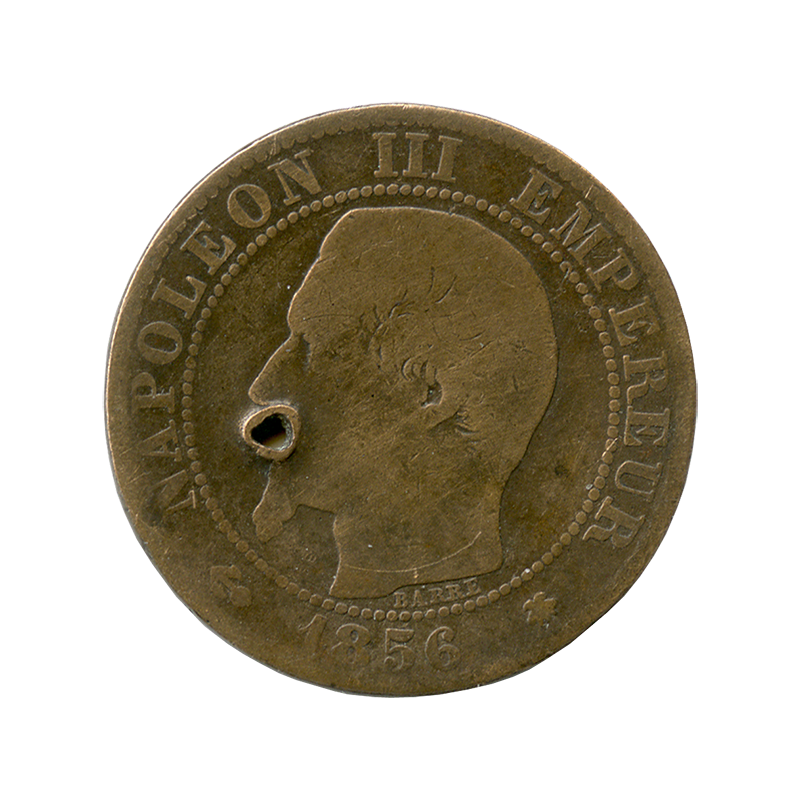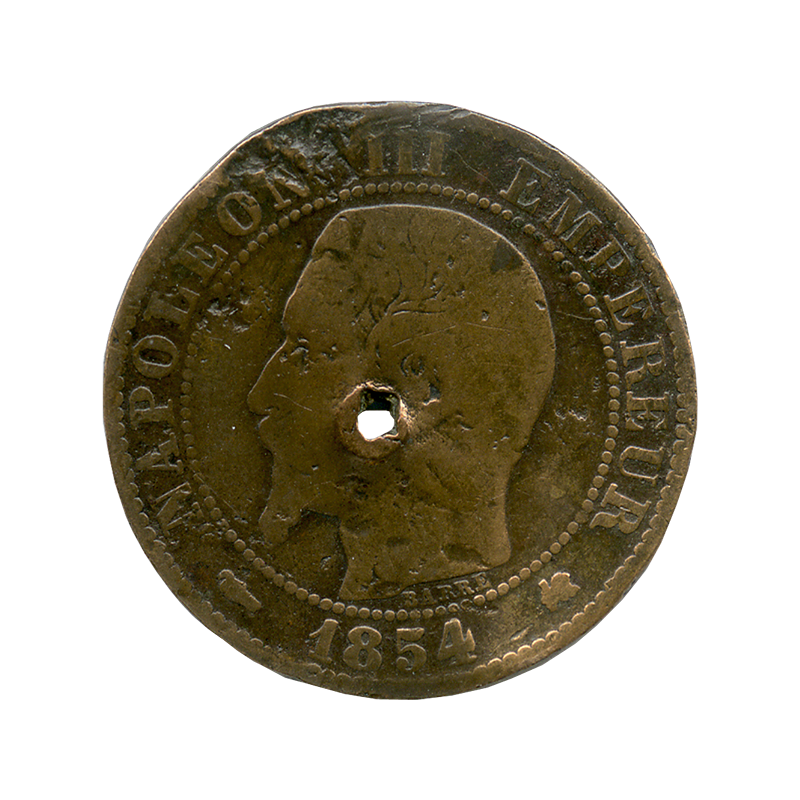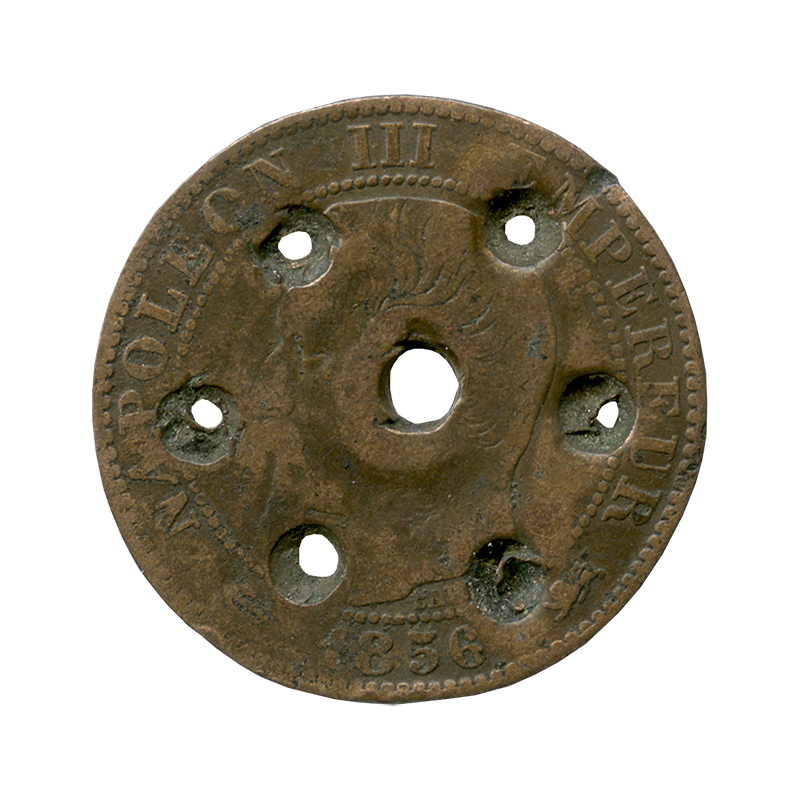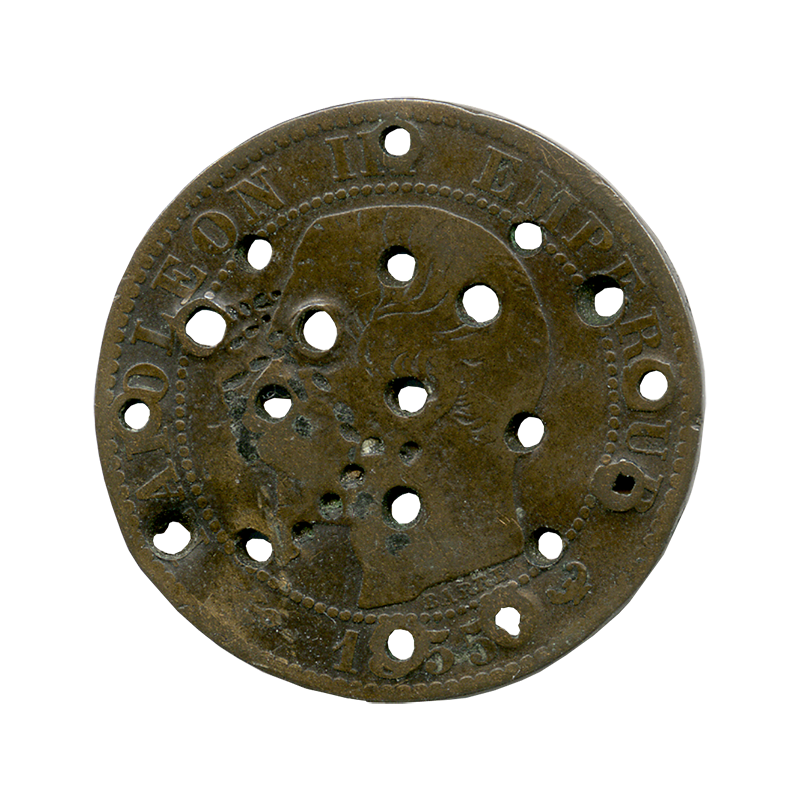Satirical coins
Collection of 14 napoleon III satirical coins. The coinage of Napoleon III was subject to one of the largest episodes of political attack, mixed with vandalism, satire and commercial speculation. It began after the defeat of Sedan at the hands of a Prussian-led coalition of German States in September 1870. The Second Empire collapsed and the Third Republic was proclaimed, while the country was invaded. Paris was besieged until it surrendered in the winter of 1871, after the population had come close to starvation. Civil war between the Versaillais and the Communards extended death and destruction further, leaving substantial portions of Paris in ruins after bombing and fire. The enormous war indemnity of 5 billion francs to be paid to Germany and the loss of Alsace Lorraine extended further the feeling of unmitigated catastrophe looming over France in 1870-71. Napoleon's name was suddenly execrated as the author of national humiliation and his coins were defaced in massive numbers, in what is probably the most acute phenomenon of that kind in European monetary history. His portrait was mutilated by counterstamps with the words "Sedan", "1870", "lâche" (coward), "traitre" (traitor), "infame", "honte" (shame), "bourreau" (executioner), "putain", etc... Napoleon's head was given a Prussian helmet or a chain of slavery attached to his neck, when his face was not replaced by that of Bismarck or of the new German Emperor, who had achieved in the Palace of Versailles the unification of the German Reich so feared by the French. The nickname forged by Victor Hugo after the Coup d'Etat, "Napoleon the small", was resumed. The French imperial eagle was transformed in an owl, its thunder replaced by human bones and the "Empire français" was rechristened "vampire français". The 80,000 French soldiers taken prisoner after the surrender of Sedan were also part of the indictment. A cigarette was added to the lips of the fallen Emperor as a symbol of his indifference to the plight of his army, as it had been reported that he had been seen smoking on the battlefield. Such a sight would not have shocked anyone in the wars of the twentieth century, but at the time it was considered to be a sign of carelessness; the Emperor was also seen moving around on the front line by carriage and not on horseback, because of his illness. The violence of the damnatio memoriae was such that Napoleon's face could also be transformed into a skull or into the groin of a pig.

